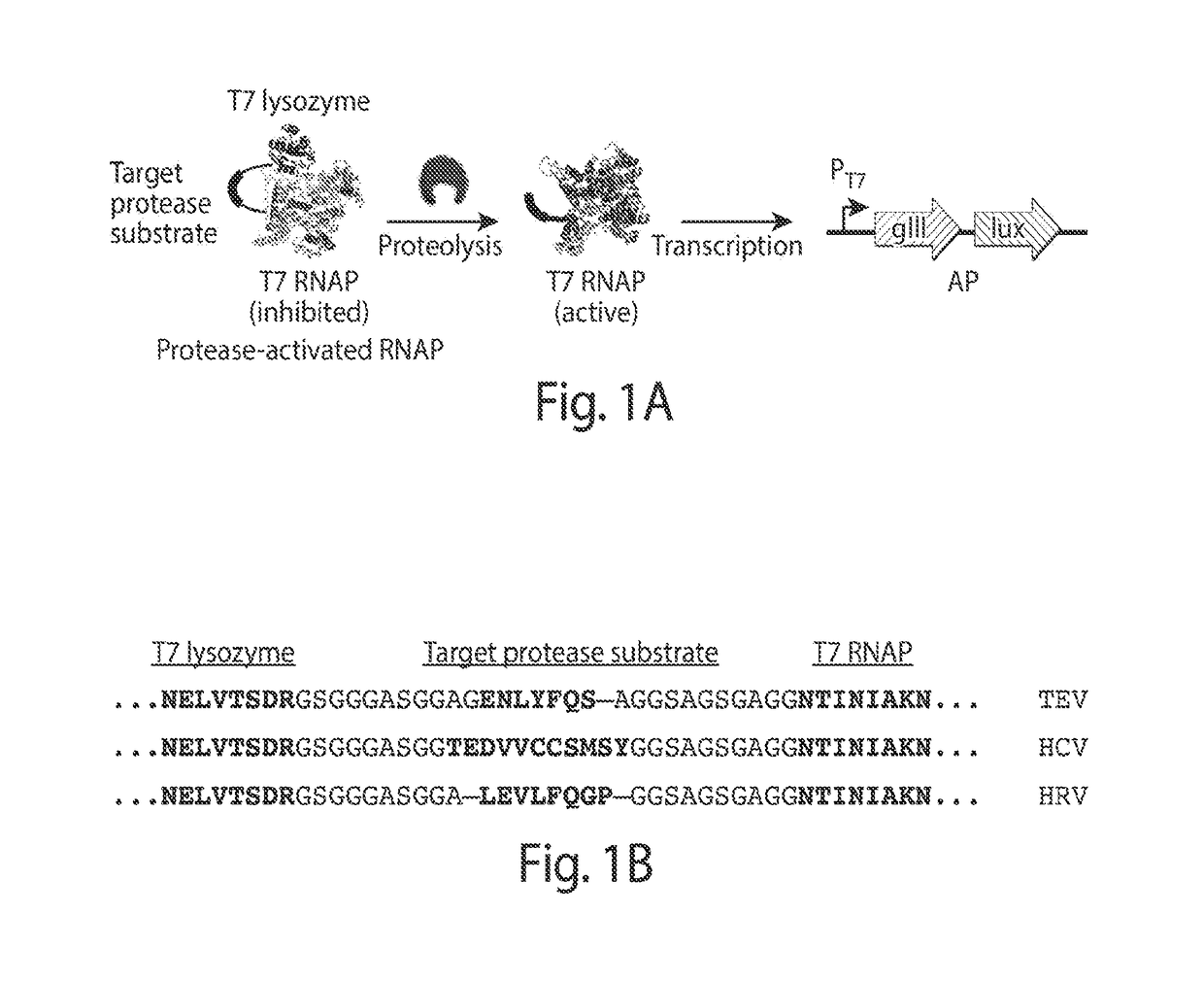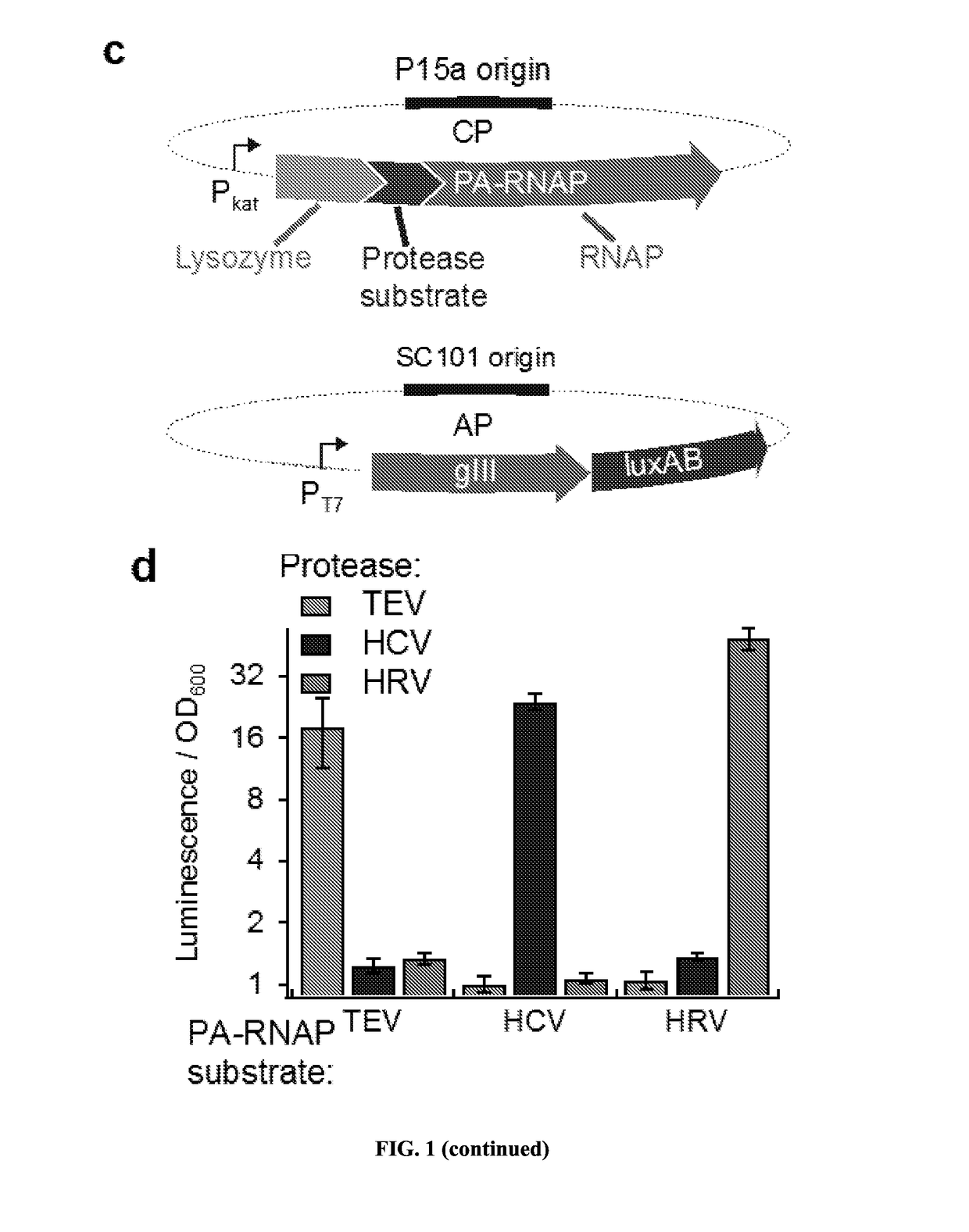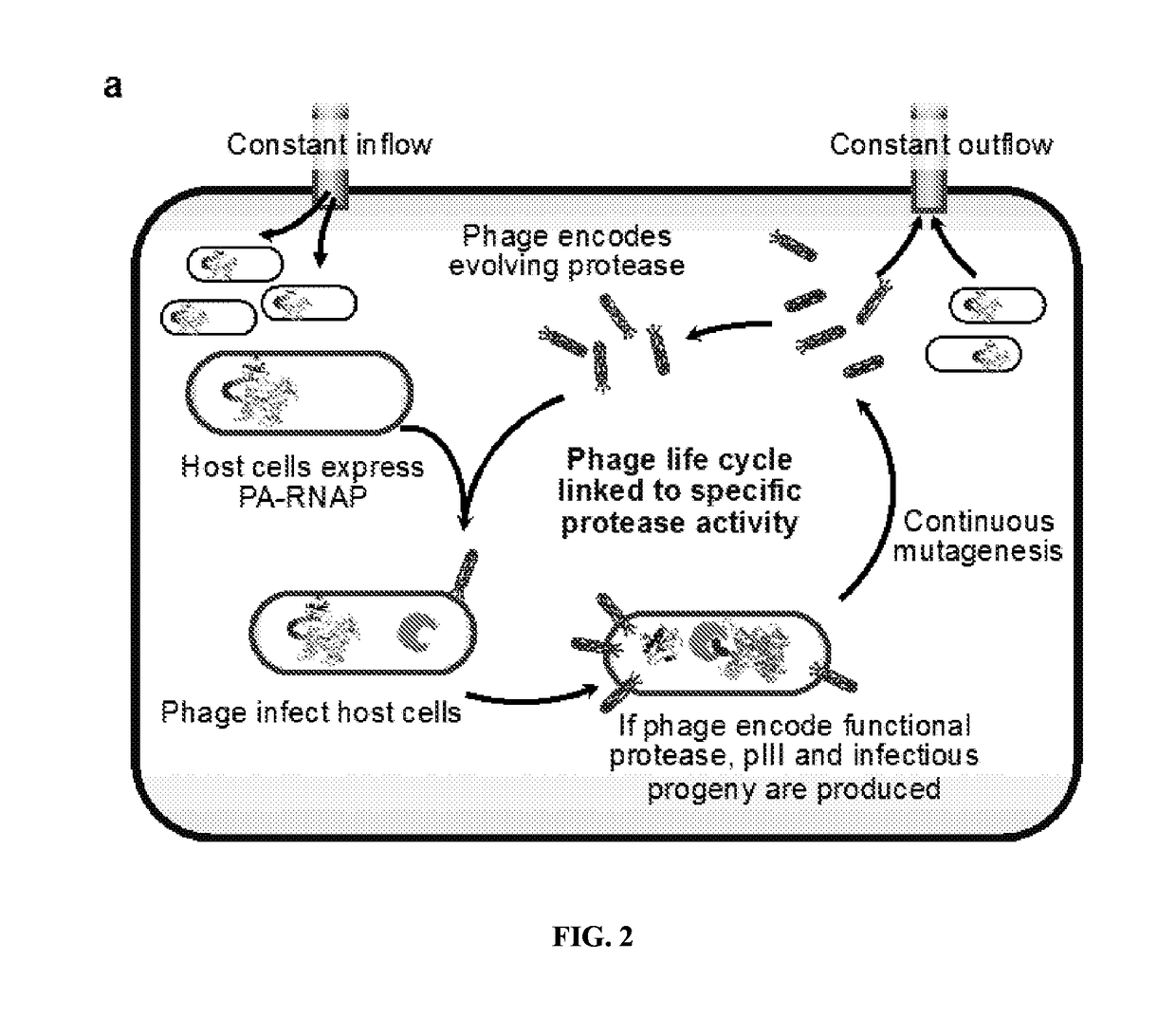Evolution of proteases
- Summary
- Abstract
- Description
- Claims
- Application Information
AI Technical Summary
Benefits of technology
Problems solved by technology
Method used
Image
Examples
example 1
isted Directed Evolution of Proteases
[0209]Transducing Protease Activity into Gene Expression
[0210]PACE requires that a target activity be linked to changes in the expression of an essential phage gene such as gene III (gIII). To couple the cleavage of a polypeptide substrate to increases in gene expression, we engineered a PA-RNAP that transduces proteolytic activity into changes in gene expression that are sufficiently strong and rapid to support PACE. T7 RNA polymerase (T7 RNAP) is naturally inhibited when bound to T7 lysozyme31. We envisioned that T7 lysozyme could be tethered to T7 RNAP through a flexible linker containing a target protease cleavage site. Without wishing to be bound by theory, it is believed that the effective concentration of the tethered T7 lysozyme with respect to T7 RNAP would be sufficiently high that the T7 RNAP subunit would exist predominantly in the T7 lysozyme-bound, RNAP-inactive state. Proteolysis of the target sequence would disfavor the bound T7 R...
example 2
ming Protease Specificity
[0253]FIG. 12 shows the directed evolution of a reprogrammed HRV protease. Wild-type HRV protease cleaves the substrate sequence LEVLFQGP (SEQ ID NO: 22), but does not cleave the target substrate sequence LEVLFQYP (SEQ ID NO: 23). A 96 hour PACE experiment was performed starting with the wild-type protease substrate sequence for 24 hours, followed by a 50:50 mixture of wild-type and target substrate sequence for 24 hours and the target sequence only for 48 hours. After 96 hours, clones comprising mutations T143A and T143P were recovered. Activity of mutant clones on wild-type and target substrate were tested.
[0254]FIG. 13 shows the directed evolution of a reprogrammed TEV protease. Wild-type TEV protease cleaves the substrate sequence ENLYFQSA (SEQ ID NO: 24), but does not cleave the target substrate sequence ENLYFESA (SEQ ID NO: 25). A 96 hour PACE experiment was performed starting with the wild-type protease substrate sequence for 24 hours, followed by a 5...
PUM
| Property | Measurement | Unit |
|---|---|---|
| Efficiency | aaaaa | aaaaa |
Abstract
Description
Claims
Application Information
 Login to View More
Login to View More - R&D
- Intellectual Property
- Life Sciences
- Materials
- Tech Scout
- Unparalleled Data Quality
- Higher Quality Content
- 60% Fewer Hallucinations
Browse by: Latest US Patents, China's latest patents, Technical Efficacy Thesaurus, Application Domain, Technology Topic, Popular Technical Reports.
© 2025 PatSnap. All rights reserved.Legal|Privacy policy|Modern Slavery Act Transparency Statement|Sitemap|About US| Contact US: help@patsnap.com



